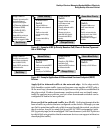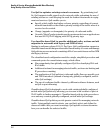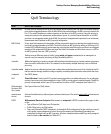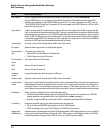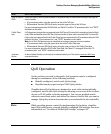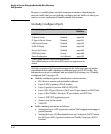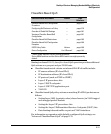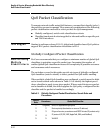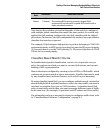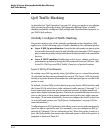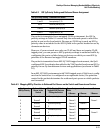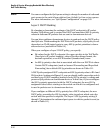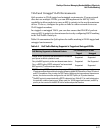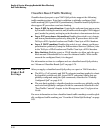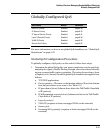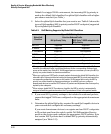
Quality of Service: Managing Bandwidth More Effectively
QoS Packet Classification
Search
Order
Precedence Global QoS Classifier
6 6
Incoming source-port on the switch
Default 7 (lowest) The incoming 802.1p priority (present in tagged VLAN
environments) is preserved if no global QoS classifier with a
higher precedence matches.
Note that on the switches covered in this guide, if the switch is configured
with multiple global classifiers that match the same packet, the switch only
applies the QoS marking configured for the QoS classifier with the highest
precedence. In this case, the QoS configuration for another, lower-precedence
classifier that matches is ignored.
For example, if QoS assigns a high priority to packets belonging to VLAN 100
and normal priority to all IP protocol packets, because the IP protocol priority
(4) has precedence over the VLAN priority (5), IP protocol packets on VLAN
100 are set to normal priority.
Classifier-Based Match Criteria
In classifier-based packet classification, match criteria provide a way to
select the packets on which you want to execute QoS actions, such as rate-
limiting or 802.1p prioritization.
Match criteria are configured by creating a class of IPv4 or IPv6 traffic, which
contains one or more match or ignore statements. A traffic class may be used
by any classifier-based software feature, such as QoS or port mirroring.
By using classifier-based QoS, you can configure multiple match criteria that
search multiple fields in packet headers to select the exact traffic you want to
rate-limit or prioritize for a port or VLAN interface. A classifier-based QoS
policy is especially useful when you want to manage different types of traffic
in the same way (for example, to prioritize both IP subnet and voice traffic).
For information on how to use match criteria to configure a traffic class, refer
to “Classifier-Based Software Configuration” on page 9-1.
6-13



